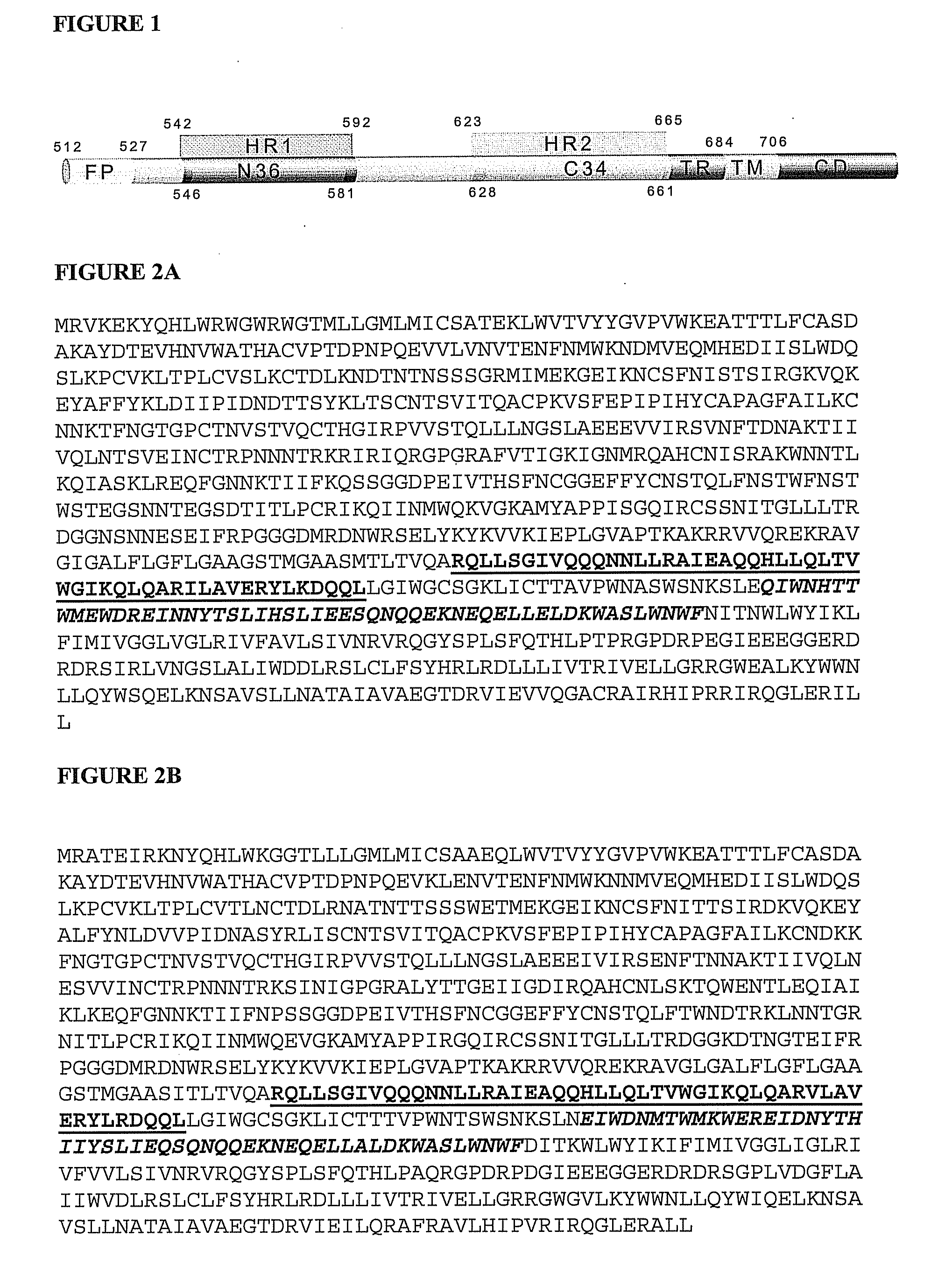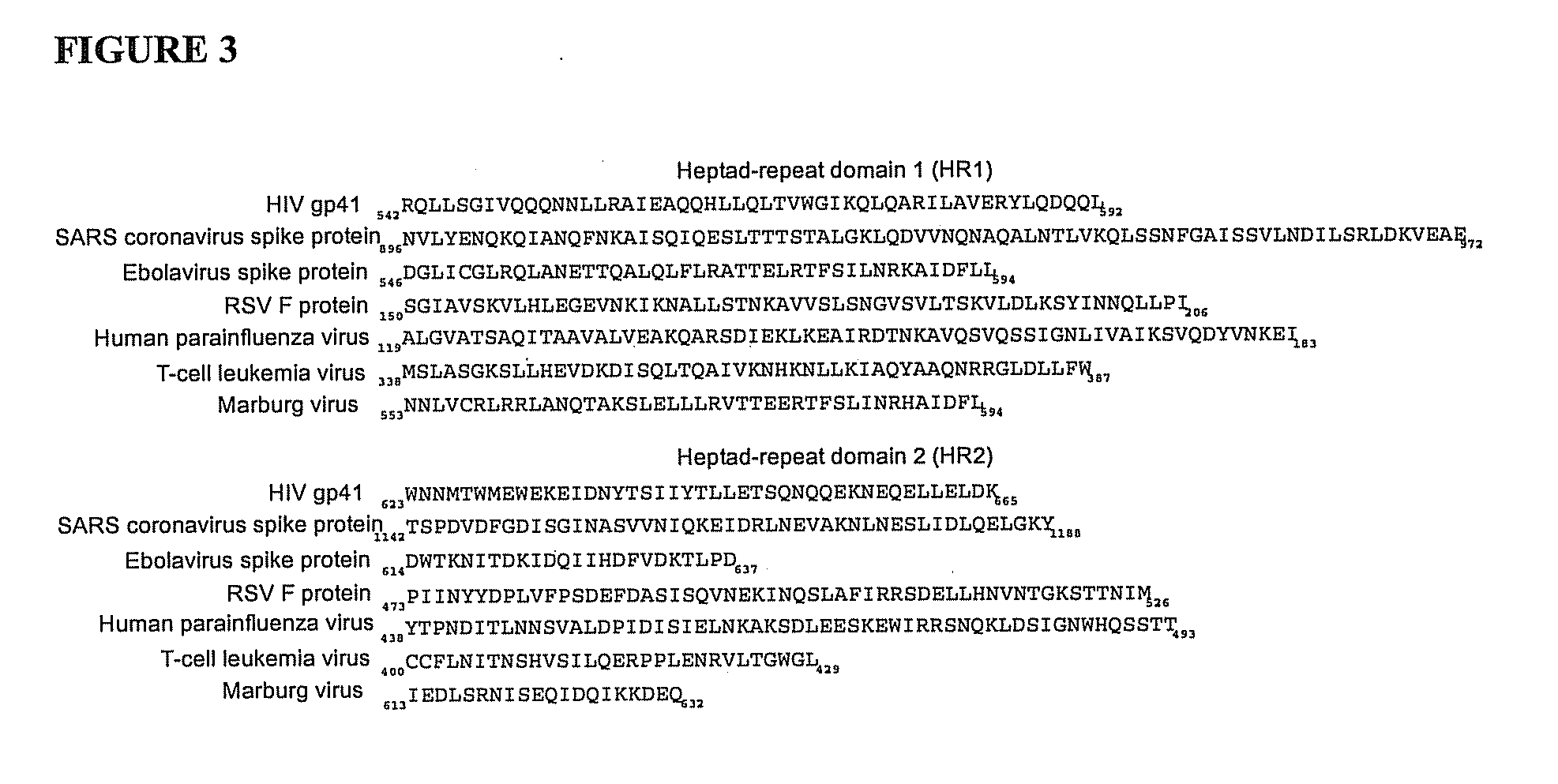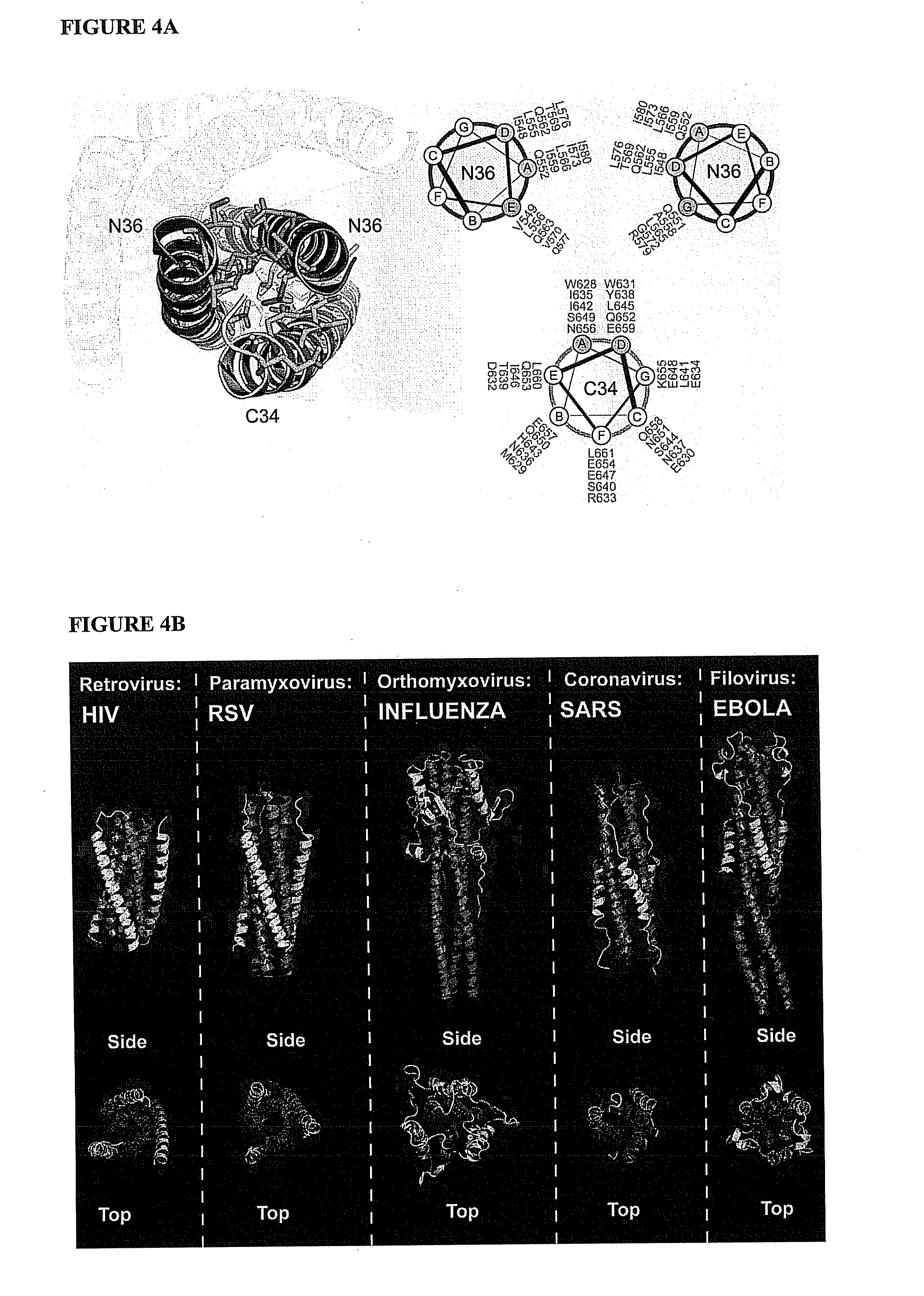Compositions and methods for the treatment of viral infections
a technology for viral infections and compositions, applied in the field of compositions and methods for the treatment of viral infections, can solve the problems of poor in vivo stability, hindering their use, and inability to be orally available, and achieve excellent proteolytic, acid and thermal stability, and high interfering
- Summary
- Abstract
- Description
- Claims
- Application Information
AI Technical Summary
Benefits of technology
Problems solved by technology
Method used
Image
Examples
example 1
Synthesis of Hydrocarbon Stapled Alpha Helical Polypeptides
[0271]A combined strategy of structural analysis and chemical synthesis is applied to construct the modified polypeptides. Asymmetric syntheses of α,α-disubstituted amino acids is first performed as previously reported (Schafmeister, C. E., J. Po, and G. L. Verdine, Journal of the American Chemical Society, 2000. 122(24): p. 5891-5892; Walensky, L. D., et al., Science, 2004. 305(5689): p. 1466-1470). The modified polypeptide compounds are generated by replacing at least two naturally occurring amino acids with the a,a-disubstituted non-natural amino acids at discrete locations flanking either 2, 3 or 6 amino acids, namely the “i, i+3,”“i, i+4” or “i, i+7” positions, respectively.
[0272]Locations for the non-natural amino acids and subsequent hydrocarbon staple(s) are carefully chosen so as not to interfere with N36 interactions (Chan, D. C., et al., Cell, 1997. 89(2): p. 263-273). Residues in positions a and d interact direct...
example 2
Determining the Secondary Structure and Proteolytic Stability of the Modified Polypeptides
[0275]The α-helicity of stapled modified polypeptides can be compared to their unmodified counterparts by circular dichroism. CD spectra can be obtained on a Jasco J-710 or Aviv spectropolarimeter at 20° C. using the following standard measurement parameters: wavelength, 190-260 nm; step resolution, 0.5 nm; speed, 20 nm / sec; accumulations, 10; response, 1 sec; bandwidth, 1 nm; path length, 0.1 cm. The α-helical content of each peptide is calculated by dividing the mean residue ellipticity [Θ]222obs by the reported [Θ]222obs for a model helical peptide (Forood, B., E. J. Feliciano, and K. P. Nambiar, PNAS, 1993. 90(3): p. 838-842; J. Martin Scholtz, Biopolymers, 1991. 31(13): p. 1463-1470; Lawless, M. K., et al., Biochemistry, 1996. 35(42): p. 13697-13708) or using, for example, the Aviv machine using CDNN software developed by Brohm in order to deduce five different secondary structure fraction...
example 3
Optimization of the Biophysical and Biochemical Properties of the Modified Polypeptides by Evaluating Diversified Modified Peptide Libraries Synthesized in High-Throughput Fashion
[0277]High-throughput technologies can be used to optimize the modified polypeptides activities for cellular and in vivo studies. For example, an Apex 396 multichannel synthesizer (AAPPTEC; Louisville, Ky.) can be used to produce polypeptide libraries for biological evaluation. The polypeptide compounds can be diversified by extension, truncation, or amino acid substitution across natural and select non-natural amino acids, and differential staple localization can be made to maximize their biophysical and biochemical properties. The libraries are generated using high-throughput solid phase Fmoc chemistry and ruthenium-catalyzed olefin metathesis and peptide deprotection and cleavage. Peptide purification is achieved by reverse phase C18 HPLC, and products characterized by LC / MS mass spectrometry and amino a...
PUM
| Property | Measurement | Unit |
|---|---|---|
| pH | aaaaa | aaaaa |
| pH | aaaaa | aaaaa |
| temperature | aaaaa | aaaaa |
Abstract
Description
Claims
Application Information
 Login to View More
Login to View More - R&D
- Intellectual Property
- Life Sciences
- Materials
- Tech Scout
- Unparalleled Data Quality
- Higher Quality Content
- 60% Fewer Hallucinations
Browse by: Latest US Patents, China's latest patents, Technical Efficacy Thesaurus, Application Domain, Technology Topic, Popular Technical Reports.
© 2025 PatSnap. All rights reserved.Legal|Privacy policy|Modern Slavery Act Transparency Statement|Sitemap|About US| Contact US: help@patsnap.com



